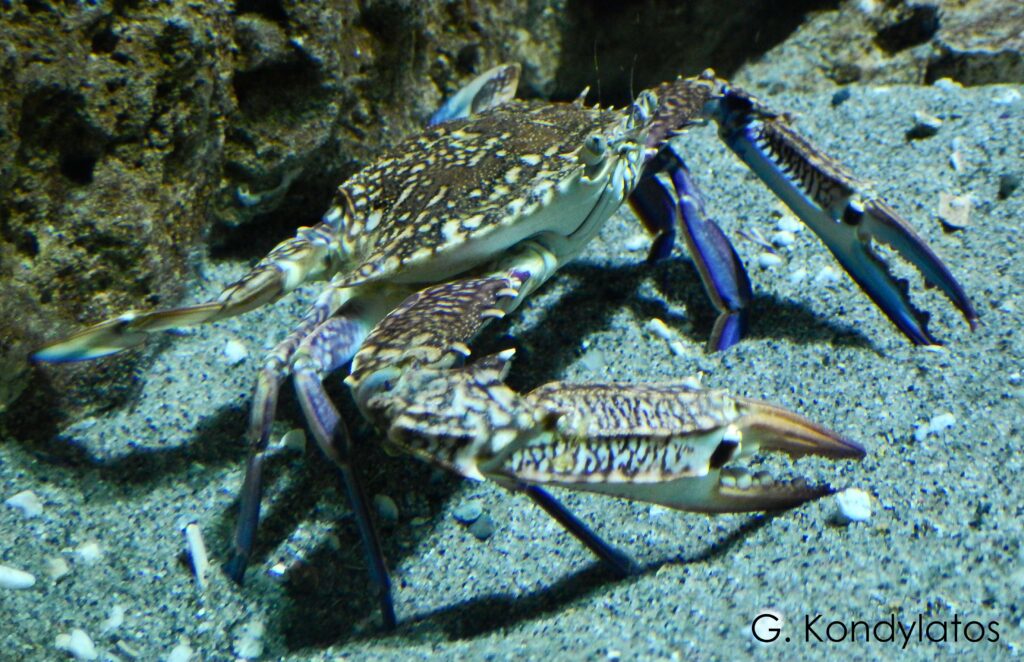Microcosmus squamiger
Microcosmus squamiger Read More »
Make a call: +30 211 10 65 217
Email:elnais(at)hcmr.gr
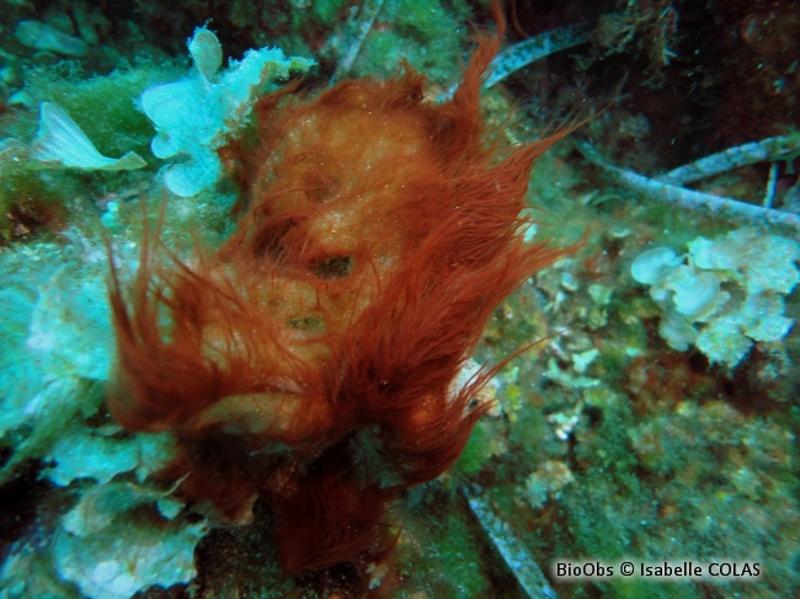
The species is a solitary ascidian with a presumable Australian origin which dwells in shallow rocky littoral habitats, particularly bays and harbours.
Montesanto F.& Mastrototaro F, 2022. New record of the non-indigenous species Microcosmus squamiger Michaelsen, 1927 (Tunicata, Ascidiacea) within a Greek marina.
2019
Sites where Microcosmus squamiger has been recorded in the Hellenic Seas.
Microcosmus squamiger Read More »
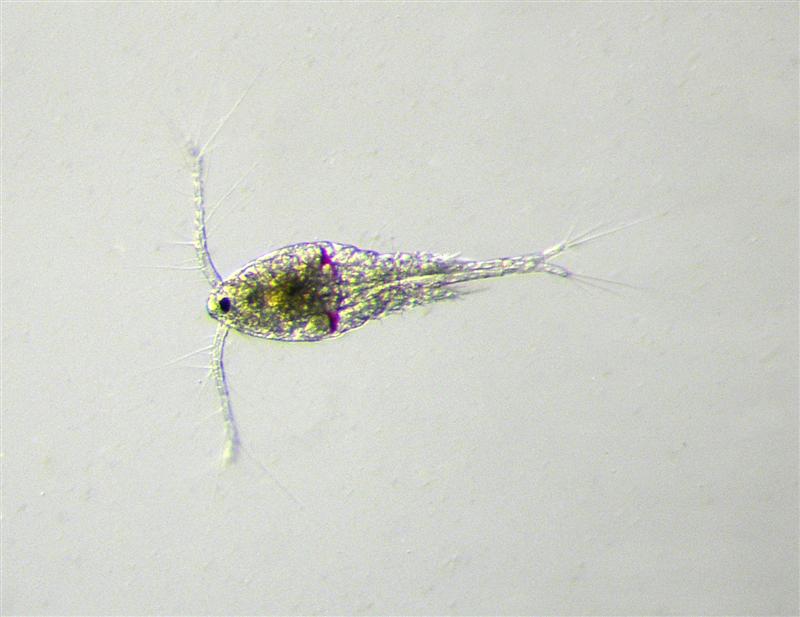
They are small zooplankton,with a body form oval with sharply pointed rostrum, visible under a stereoscope.
Kourkoutmani, P., Loufi, K., Kalantaridou, G., Karagianni, A., & Michaloudi, E. (2023). Spatio-temporal variation of the invasive copepod Oithona davisae in the zooplankton community of Kavala harbour. Mediterranean Marine Science, 24 (1), pp. 174–181. https://doi.org/10.12681/mms.32127
2017
UNA, TS
It is a pelagic organism, that mainly occurs in the upper layers of the water column. Yet, in the north-eastern, north-western and western Black Sea where it is invasive, it can be found up to 1000 m deep.They are gonochoric. Cyclopoid copepods have four major life phases: egg, nauplii, copepodites and adult. They are mainly feeding on small flagellates and microzooplankton.
It successfully competes other even larger copepod species. Nevertheless the impacts on the zooplankton community diversity are not very well known. In addition, small copepods are considered to be a suitable prey for the early fish larvae of numerous species. This could favor the fish stocks, yet such impacts have not been recorded yet.
Small copepods are considered to be a suitable prey for the early fish larvae of numerous species. Yet, how this affects the fisheries catches is still unknown.
No
No
Sites where Oithona davisae has been recorded in the Hellenic Seas.
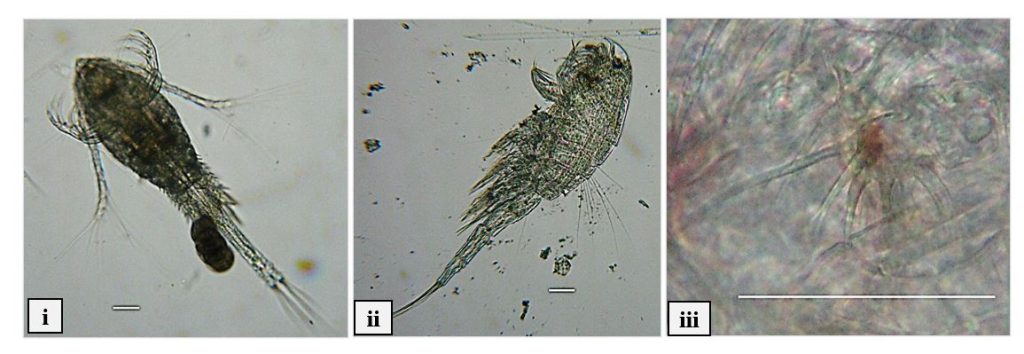
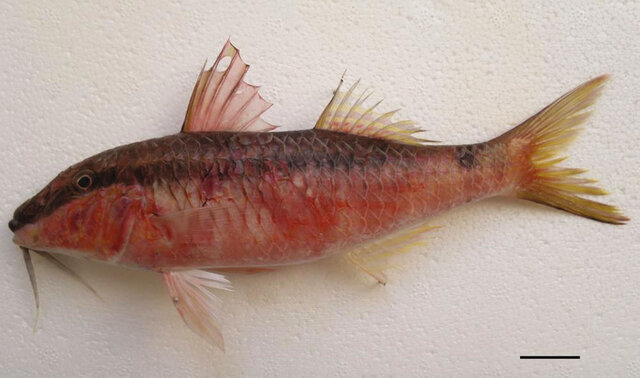
Body with a broad black stripe from the upper lip through the eye along upper side of body, ending beneath the end of the second dorsal fin; above stripe greyish green and below white. Just before the tail, yellow with an irregular roundish black spot, tail yellow. Common size ≈20 cm.
Corsini-Foka, M. & Kondylatos, M. in Stamouli C, Akel EHKh, Azzurro E, Bakiu R, Bas AA, Bitar G, Boyaci Y.Ö, Cakalli M, Corsini-Foka M, Crocetta F, Dragičević B, Dulčić J, Durucan F, El Zrelli R, Erguden D, Filiz H, Giardina F, Giovos I, Gönülal O, Hemida F, Kassar A, Kondylatos G, Macali A, Mancini E, Ovalis P, Paladini De Mendoza F, Pavičić M, Rabaoui L, Rizkalla Si, Tiralongo F, Turan C, Vrdoljak D, Yapici S, Zenetos A (2017). New Mediterranean Marine biodiversity records (December 2017). Mediterranean Marine Science 18(3): 534-556
2017
UNA
Red sea goatfish
Usually seen in small groups on sandy bottoms near coral reefs and rocks.
No impact on biodiversity has been reported to date.
No impact on health and ecosystem services has been reported to date. It is very often sold in the markets and taverns, together with the native surmullet (Mullus surmuletus). Thus it has a commercial importance to fisheries.
Yes
No
Sites where Parupeneus forsskali has been recorded in the Hellenic Sea.
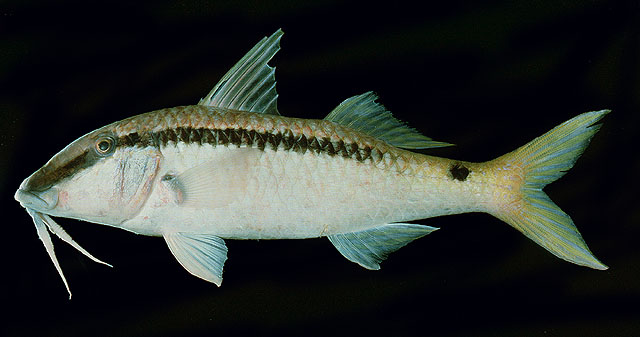

Parupeneus forsskali Read More »
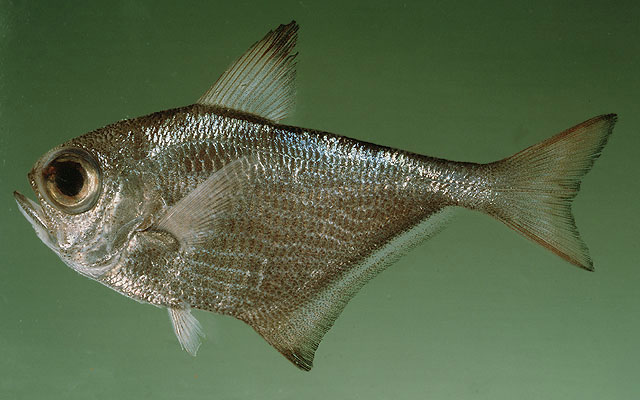
Body small (up to 13 cm), rhomboid and flattened from the sides. Eyes big and short snout. Color reddish-bronze. Fins with a darker edge.
Zachariou-Mamalinga, H. (1990). The fishes of Symi, Dodecanese. Their scientific, vernacular, common modern Greek and ancient Greek names. Annales dei Musei Goulandris 8: 309-416
1983
UNA
It is a neritic species, inhabiting shallow waters, around coral reefs and rocky outcrops of tropical and temperate waters. It preys at nights on zooplankton.
No impact on biodiversity has been reported to date.
No impact on health and ecosystem services has been reported to date.
Sites where Pempheris rhomboidea has been recorded in the Hellenic Sea.

Pempheris rhomboidea Read More »
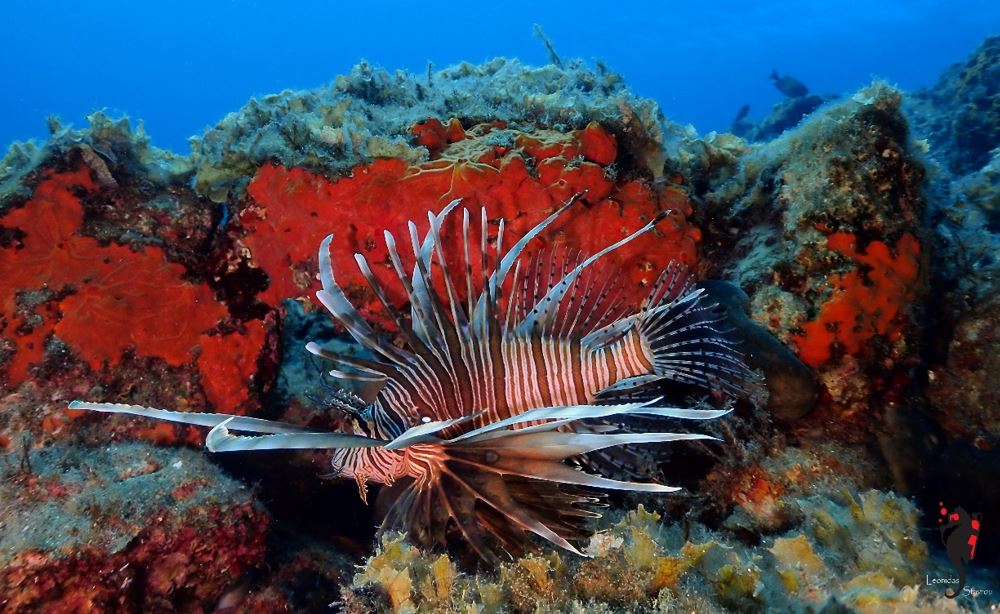
© Leonidas Stavrou
Body and fins banded with alternating wide dark brown/black, white and red bands. Anal and caudal fins ornamented with dark spots. Small individuals, with a lighter coloration. Dorsal fin appears feathery, whereas pectoral fins wing-like.
Corsini-Foka, M., Kondylatos, G. (2015). First occurrence of the invasive lionfish Pterois miles in Greece and the Aegean Sea. Medit. Mar. Sci. 16/3: 692-702.
2009
est
Devil firefish, Lionfish
It lives in a wide variety of shallow habitats (sandy-muddy, rocky, and Posidonia oceanica meadows), but mainly rocky and at depths up to 150 m.
It is a voracious predator that can eat practically every organism that fits in its mouth, and feeds mainly on fish and crustaceans.
According to spear-gun fishers, it occupies crevices previously sheltering groupers. Moreover, being a voracious predator is expected to strongly impact the native biota. Yet, the magnitude of its impacts is still unknown.
Venomous, that in cases can cause allergic reactions and may be dangerous to humans. Predation upon fish and other commercial species could potentially cause impacts on fisheries. Appealing for snorkelers/divers.
Yes
Yes (painful sting)
Records where the species has been recorded in the Hellenic Seas.


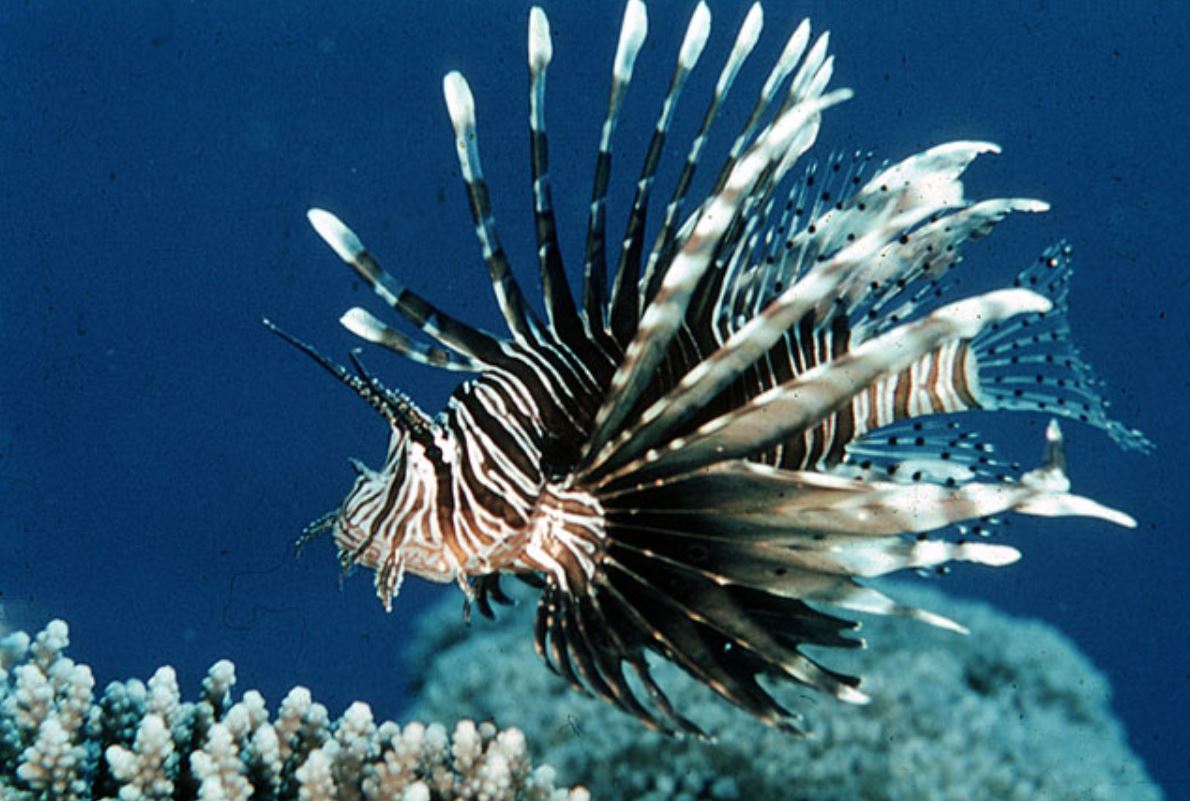
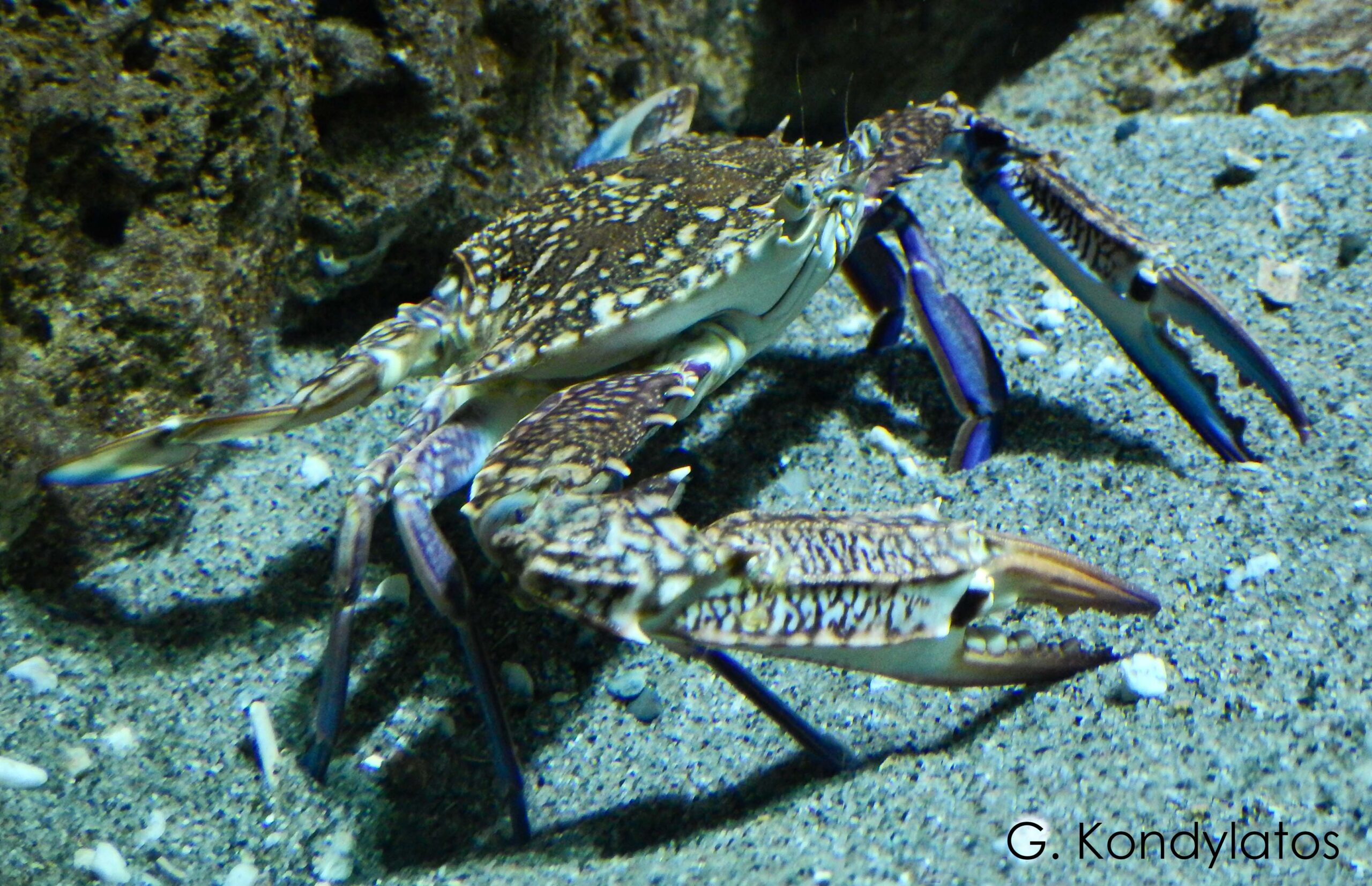
Males have a dark olive green blue carapace marked with numerous pale white spots on especially towards the rear and along the sides. The females are similar to the males except that the tips of their legs are red with a brownish red tinge rather than being blue tinged with intense rusty red.
Corsini-Foka, M., Kondylatos, G., Economidis, PS (2004). Occurrence of the lessepsian species Portunus pelagicus (Crustacea) and Apogon pharaonis (Pisces) in the marine area of Rhodes Island. Mediterranean Marine Science 5(1): 5-17.
1991
UNA
Lives mainly in coastal waters in seagrass meadows, along mangroves and intertidal mudflats. Found under rocks and in rock pools, on sandy or muddy substrate. Opportunistic predator, primarily a carnivore preying on a variety of benthic animals and less marine plants and sea
The populations of P. segnis, an omnivorous predator much larger than any of the sea’s native portunid crabs, and lacking predators as adults, may outcompete local taxa.
There are negative impacts on fishery economy that relate to the predation by blue swimming crabs on fishing catches and the damage of fishing nets where they get entangled.
Yes
No
Sites where Portunus segnis has been recorded in the Hellenic Seas.
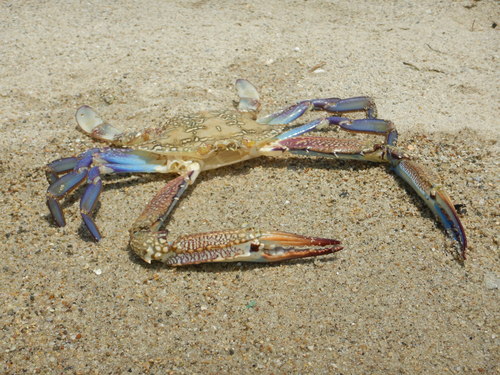

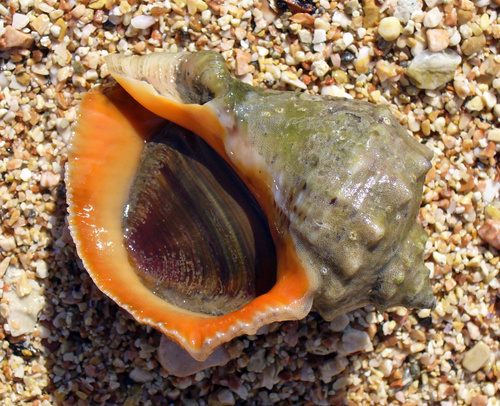
Shell globose, with very large body whorl and low conical spire. Spire whorls with a strong shoulder, irregular spiral sculpture. Aperture large, ovate, slightly expanded. Siphonal canal broad, widely open and bearing a series of scales. Τhe colour of the shell is variable from dull grey, to orange-brown, and atypically blonde, with more or less dark brown dashes on the spiral ribs. The aperture and columella vary from deep orange to yellow, or off-white. Shells can reach 168.5 mm or more in size.
Koutsoubas, D., Voultsiadou-Koukoura, E. (1991). Occurrence of Rapana venosa (Valenciennes, 1846) in the Aegean Sea. Bolletino Malacologico 26(10-12): 201-204
1986
UNA
Purple whelk
Rapana venosa has a wide range of habitats, including rocky shores, mussel beds, oyster reefs, sand, silt, eelgrass beds, and pilings, at depths from 0.5 to 25 m. It is carnivorous whose main diet consists of a variety of molluscs including native oysters and may be scavenger on carrion.
R. venosa has become established in the Black Sea with significant damage to native benthos (e.g. bivalves; notably Ostrea edulis, Pecten ponticus, and Mytilus galloprovincialis).
In Ukrainian waters, it destroyed the oyster banks in the area of the Kerch Strait and in Karkinitsky Bay. Hence, the species has a severe impact on all ecosystem services provided by mussel and oyster biogenic reefs.
Yes
No
Sites where Rapana venosa has been recorded in the Hellenic Seas.
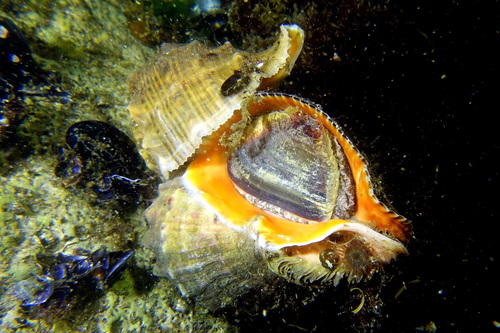

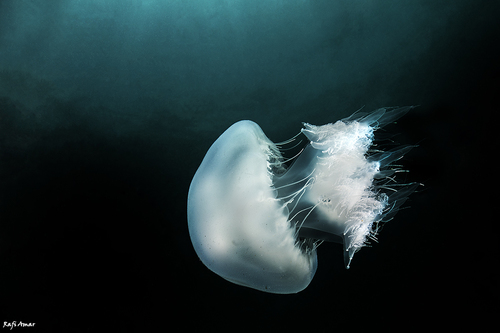
It is a marine bivalve with a thick, strongly ribbed shell. The hinge line bears numerous teeth, arranged in a line on both valves. Both valves have prominent beaks which are set close to the anterior end and curved inward. The shell is heart-shaped in a side view. The shell is somewhat oblong, with straight shoulders below the beak. Both shells have about 12 radiating ribs. The shell is white, but it is covered with a brown periostracum. This bivalve does not have a siphon. This shell typically reaches 25 mm. Ark shells occasionally attach to rocks and shells with byssus threads.
Siokou-Frangou I, Sarantakos K, Christou ED (2006). First record of the scyphomedusa Rhopilema nomadica Galil, 1990 (Cnidaria: Scyphozoa: Rhizostomeae) in Greece. Aquatic Invasions 1(3): 194-195.
2006
UNA
Nomad jellyfish
It lives close to the water surface, forming large swarms. Recorded at a distance of 2-4 km off shore but can be swept near the shore and into the intertidal zone. Usually of 40-60 cm in size, but can reach up to 90 cm.
Forms dense swarms that might outcompete the native jellyfish Rhizostoma pulmo. It serves as a shelter for juveniles of the alien fish Alepes djedaba. High abundances of the fish were related with increased numbers of the jellyfish.
Very dangerous to humans, as it can cause painful injuries that may lead to hospitalizations. This results in problems to sea tourism and related leisure activities. Due to the large swarms formed, it may clog fishing nets, pipelines in power plants, etc, causing a serious economic problem.
No
Yes (painful sting)
Sites where Rhopilema nomadica has been recorded in the Hellenic Seas.
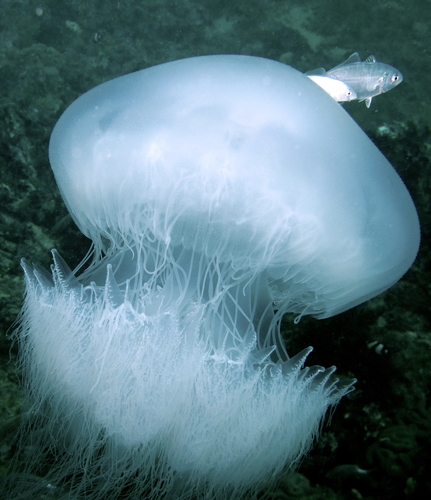

Rhopilema nomadica Read More »
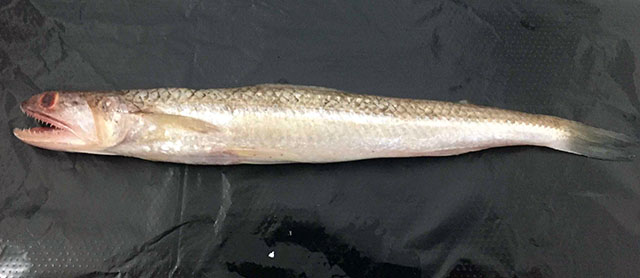
Body elongate and cylindrical, slightly compressed caudal peduncle. Color silvery. Upper margin of tail has a row of 3-8 (usually 6 or 7) distinct blackish spots.
Ondrias, IC (1971). A list of the fresh and sea water fishes of Greece. Hellenic Oceanology and Limnology 10: 23-96
<1971
UNA
Mainly found on sandy or muddy substrates to about 100 m, but more common inshore close to islands or coasts in depths of 20-30 m. Mainly piscivorous.
No impact on biodiversity has been reported to date.
No impact on health and ecosystem services has been reported to date. It is a commercial species, important in the trawl fishery of the Gulf of Suez and the Mediterranean coast of Egypt, where it is in a state of high overfishing and severe overexploitation. Also economically important fish in the north-eastern Levant, listed among the most common species (almost one third of the catch) in the trawl fishery.
Yes
No
Sites where Saurida lessepsianus has been recorded in the Hellenic Seas.
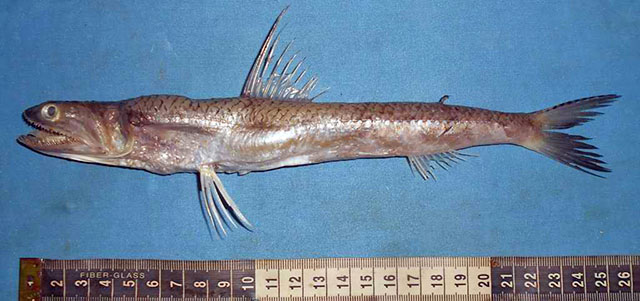

Saurida lessepsianus Read More »
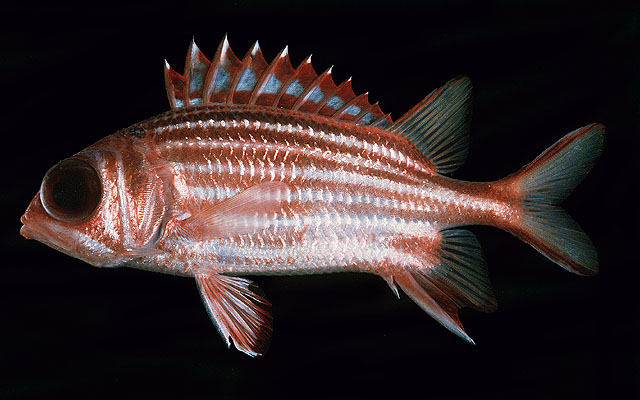
Body with subequal stripes of brownish red and silvery white; spinous dorsal fin dark red with a large, quadrangular, whitish blotch in middle of each membrane (except the first) forming a median band; dorsal membrane tips white, except posteriorly. Eye big.
Laskaridis, K. (1948a). Holocentrum rubrum (Forsk) and Lagocephalus lagocephalus (L.), two newly reported members of the Greek fishfauna (Dodecanesian islands). Proceedings of the Hellenic Hydrobiological Institut, 2: 127-129.
1947
UNA
Redcoat
Found in coastal reefs, silty reefs or wrecks in lagoons, bays, or harbors. Also found hidden in caves and cracks of rocks during the day, usually in areas subject to strong currents. Feeds mainly on benthic crabs and shrimps, also preys on small fishes. Spine of preopercle venomous.
No impact on biodiversity has been reported to date.
The venomous spine might cause a painful sting. No reports on severe cases.
Yes
Yes (painful sting)
Sites where Sargocentron rubrum has been recorded in the Hellenic Seas.
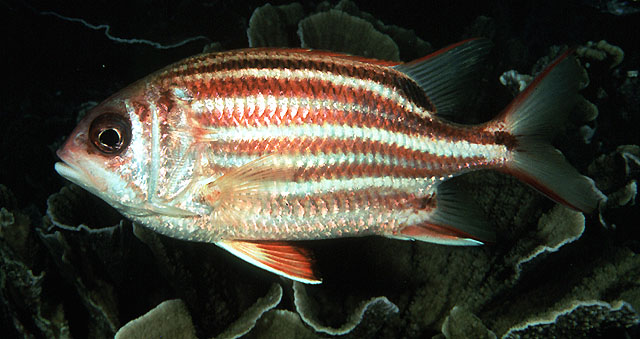

Sargocentron rubrum Read More »
